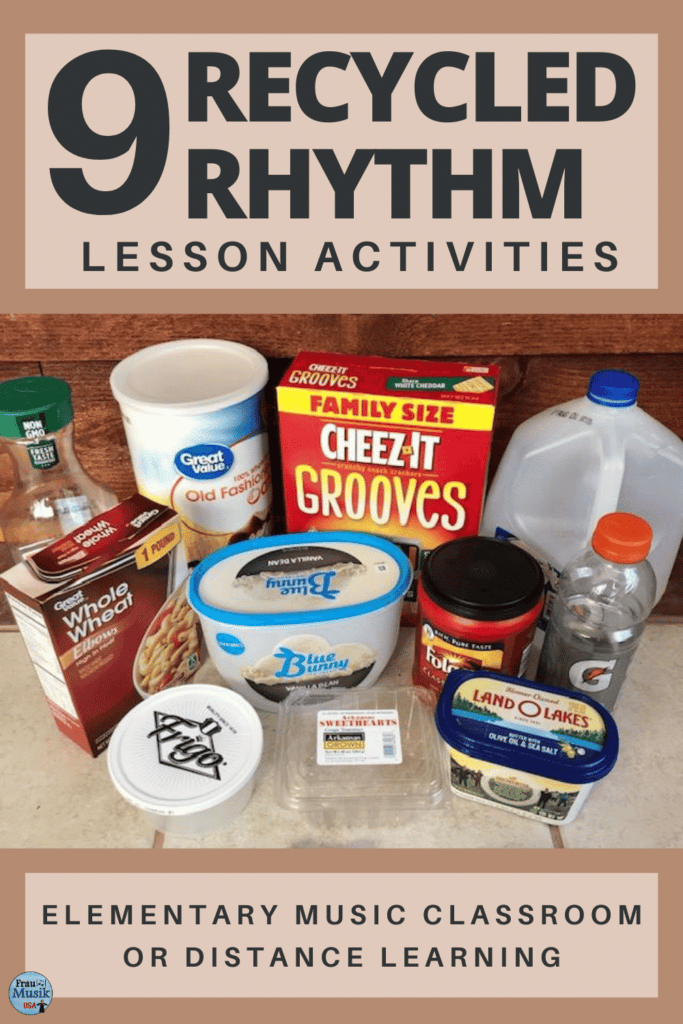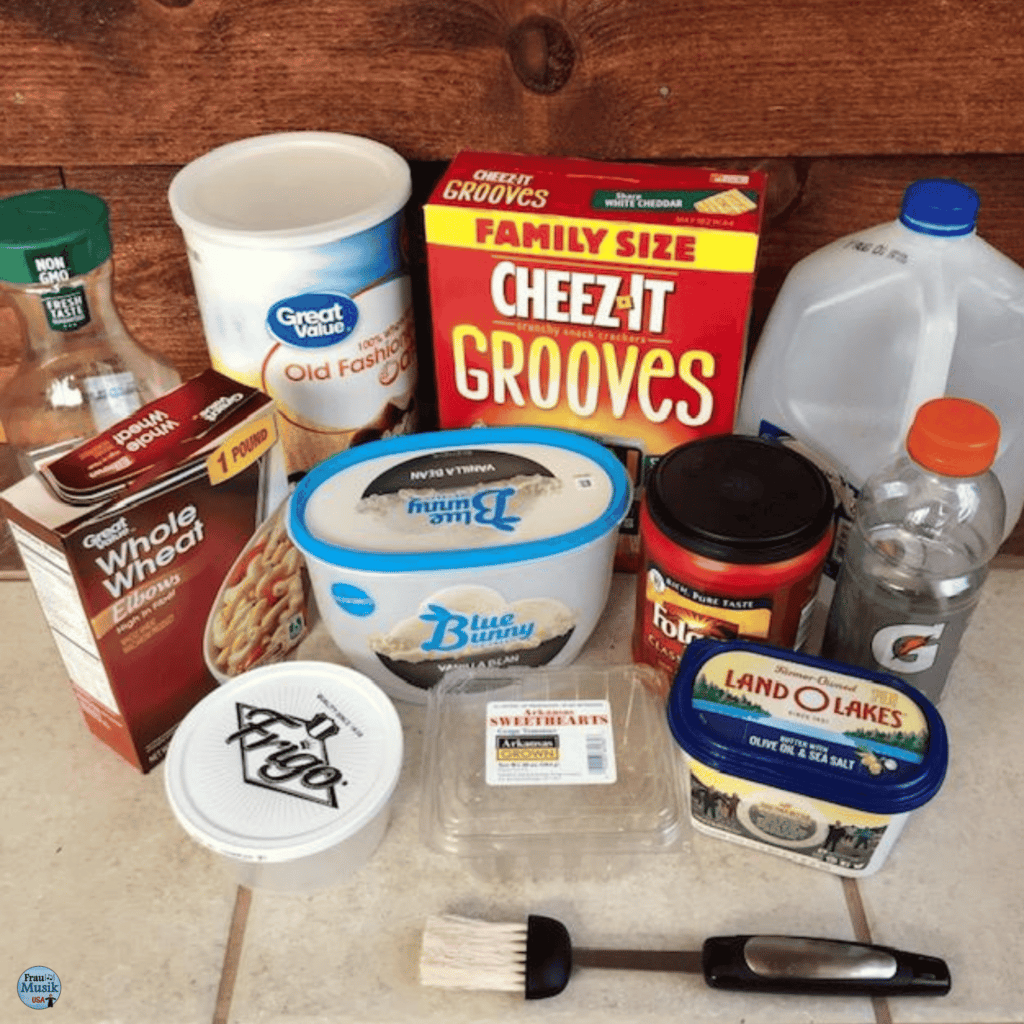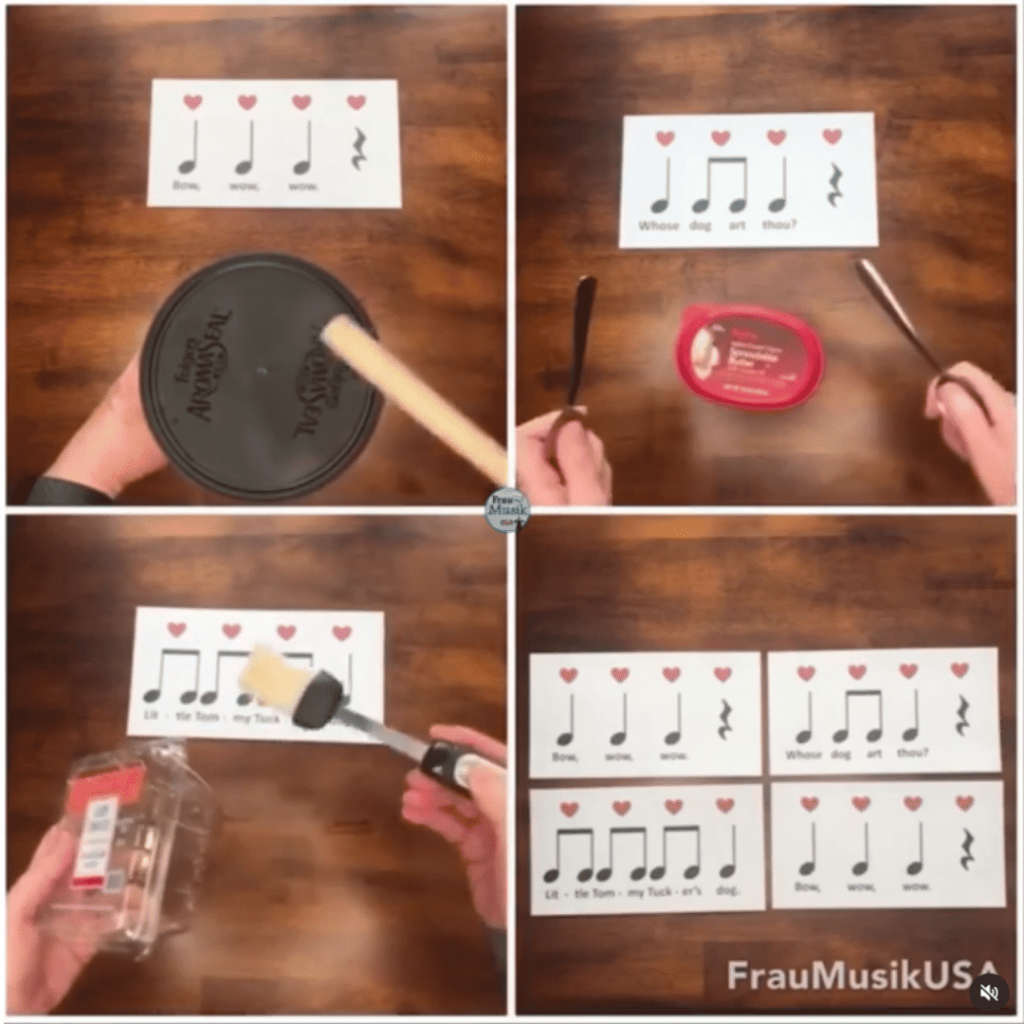Elementary Music Lesson Plan Ideas for “Found” Instruments
Found instruments are all around us. They can be a valuable addition to elementary music. See these fun ideas for your music classroom.
Some of the links on our site are affiliate links. If you click on a link and make a purchase, we may earn a small commission.
What are “found” instruments and how can I use them in my elementary music classes? Found instruments are any ordinary object which you can turn into a musical instrument.
Recycled rhythm instruments fall under the umbrella of found instruments. These ordinary, often usual instruments can be a valuable addition to your elementary music lesson plans. Bonus: They’re free.
With a limited number of classroom instruments, found instruments provide a plethora of activities and ideas which will engage your students.

What’s in this post? Click to open the Table of Contents
Storybook Video to Introduce Found Instruments
Found instruments are all around you. And, the picture book Max Found Two Sticks by Brian Pinkney is the PERFECT introduction for found instruments in your elementary music classes.
Enjoy the story read courtesy of the Bolder Philharmonic.

9 Lesson Plan Ideas Which Use Found Instruments
Below are nine different activities to incorporate into your Recycled Rhythm Instrument Unit. Space out the activities over several class sessions. Create your lesson plans so the activities and skills build sequentially.
1. Create and Decorate Instruments
Help your students think in broad terms when they choose containers or “building supplies” to create their recycled instruments. Encourage them to be creative.
If you allow students to decorate their instruments, caution them NOT to go overboard. Many decorations will change the sound of their instruments. Thick construction paper, heavy yarn, or other weighty materials will dampen the sound.

2. Experiment with Timbres
How many different sounds can students make from one instrument? Experiment with various ways to play the instrument. Tap the top, the side, the bottom. Scrape the instrument. Tap the edges. Add some “fill” and shake the instrument. Be creative.
3. Create Patterns with Contrasting Sounds
Guide students to incorporate various ways to play their instruments and create 4 or 8-beat rhythm patterns which use two different timbres. Encourage students to notate and write down their patterns if they’re musically ready.
4. “Say and Play” and/or Echo Play
Depending on the rhythm reading level of each class you may want to begin with the “Say and Play” technique. Say the rhythm syllables then immediately without stopping, prompt students to echo while they also say and play the pattern. To say the pattern aloud is an important step to develop independent rhythm skills.
Gradually drop out the rhythm syllables for echo practice. Once students are proficient, choose students to be the leader. As always, use targeted rhythm patterns appropriate for the grade level.
5. Sight Read Rhythm Patterns
After students have a solid foundation of rhythm reading it’s time to integrate sight reading and perform targeted rhythm patterns on your recycled rhythm instruments. Need some more ideas for fun ways to integrate sight reading and/or rhythm reading into your lesson plans? Take a peek at this blog post which includes 10 Fun Ways to Use Interactive Rhythm Pattern Flashcards.
Bonus: These activities work with any flashcards, digital or printable, as long as all students can see the rhythm patterns.
6. Create a Speech Piece
Use a theme from a book, a holiday or seasonal theme, or any other chosen theme to guide students to create simple rhythm patterns with corresponding lyrics to create a speech piece. Depending on the level of your students, layer those patterns one on top of another.
7. Learn about Form
Create different sections for your speech piece and try them out in different forms – ABA, AABB, ABC, or my favorite Rondo Form – ABACA. Record a video of your classroom performance and post it on your website to share with families.
8. Create a Play-Along
Max Found Two Sticks is also a perfect introduction to marching band music. This is a genre many of your students may be unfamiliar with. Create play-along rhythm patterns for Stars & Stripes Forever by John Phillips Sousa, or pick another popular march.
Create different patterns or vary the instrumentation to match the form.
9. Composer Study
Tie everything together with a short composer study of John Philip Sousa – The March King.
Create an Accompaniment Video for a Simple Song
Recycled rhythm instruments or found instruments can create quite musical accompaniments. Choose a simple song from your classroom repertoire and add a few rhythmic accompaniment patterns to create a video lesson. Play-along videos may be used with multiple classes, over multiple years, and/or as sub lessons.
Need an example to follow? Take a look at this Bow, Wow, Wow Round with three rhythmic accompaniment patterns performed on recycled rhythm instruments.
Notice I included a picture of the rhythm patterns for each instrument in the video window.
Film Videos of Your Class “Performances”
Video classroom “performances” and post them for parents to see. I like to do two takes and let students informally evaluate themselves. Then we vote to decide which version to post.
Take every opportunity to share classroom performances. Do NOT wait until the activities are perfect. Celebrate that you’re able to “perform” in the classroom together.
Conclusion
Found instruments are EVERYWHERE and they can be a valuable addition to your classroom activities. Start saving containers of all sorts today. Ask your friends, neighbors, students, and other teachers to contribute to your found instrument materials collection. The more ownership kids have the more creative and invested they become.
You can create meaningful elementary music lesson plans for your classroom with only a storybook and found instruments. Bonus: it doesn’t have to cost anything!
Learn How to Use Rhythm Clip Cards
Are you learning how to read rhythm patterns in your elementary music classroom? Take a peek at this blog post about How to Use Rhythm Clip Cards and pick up your FREE set.
Meet the Author
Terri Lloyd is a former elementary music teacher with over 25 years of experience. She holds a Bachelor of Music, a Master of Science in Education, and a Technology Certificate in Instructional Design.
Terri is active in music education through blogging, presenting and attending workshops, and curriculum development. She serves on the music staff at her church and volunteers for an after-school children’s program. Terri is an active musician in the community, performing in a local Big Band, pit orchestras, and various events.
More Helpful Links
- How to Make an Ocean Drum
- FREE Elementary Music Distance Learning Activities
- Boom Cards for Music Literacy

2 Comments
Comments are closed.